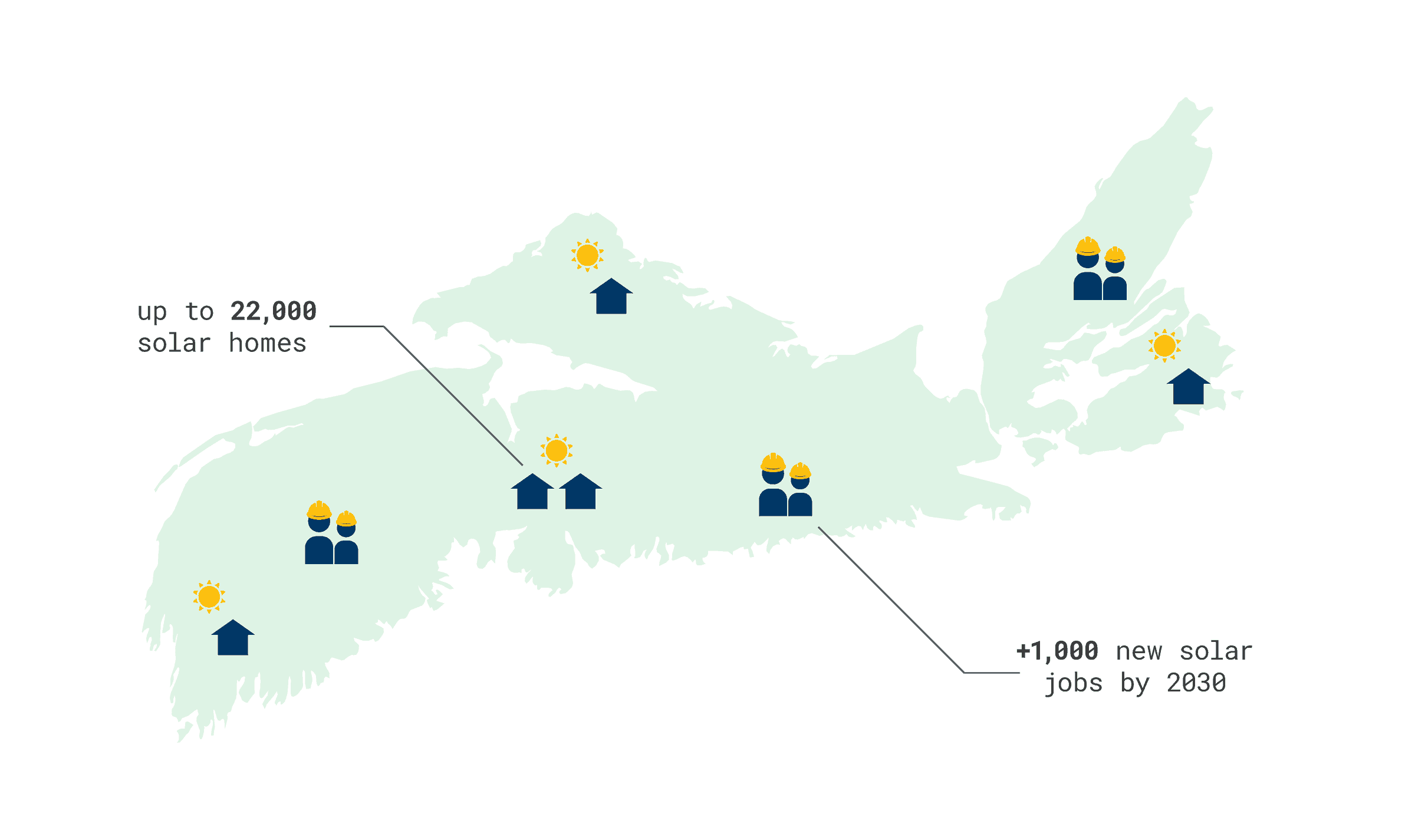
After a number of years of moderate but steady growth, the Nova Scotia residential solar market surged last year with the arrival of Efficiency Nova Scotia’s SolarHomes incentive program. With business activity soaring, Dunsky was retained by the Canadian Solar Industries Association (CanSIA) to develop a market outlook and labour force study for the Nova Scotia residential solar market.
Leveraging our Solar Adoption Model (SAM), our team developed a 10-year residential PV market outlook. Under a business-as-usual scenario, assuming no future incentives beyond 2019, we expect 140 MW (approximately 17,500 solar homes) to be installed by 2030 in the province. If incentive and support programs in the province are maintained and rebates are stepped down gradually, our modeling suggests 27% greater market uptake (more than 22,000 solar homes).
Our study also assessed the potential for job creation along the solar supply-chain, while identifying gaps in skills, training and certification that will be required to prepare the local labour force to meet projected market demand.
We found forecasted solar deployment should support up to 1,170 local jobs (FTEs) by 2030; the majority in installation, sales, engineering and other project-related functions, as well as indirect jobs in ancillary upstream activities related to distribution and manufacturing of balance of system components. Future solar incentive programs were found to be critical in the short-term to capture these job creation opportunities within the province. In the longer run, we recommend a gradual rebate step-down strategy – rather than abrupt cuts – to ensure continuous growth of the industry in Nova Scotia, and to maintain the momentum gained from SolarHomes.


